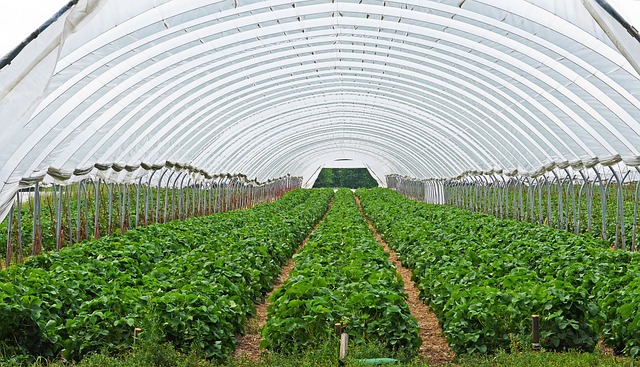

In our world that never stops evolving, the call for sustainable strategies becomes paramount to safeguard our natural world for those who come after us. As we grapple with mounting threats from climate variations and environmental decay, we must be proactive in seeking ingenious tactics to counter these concerns. A notable trend gaining momentum in this arena is the employment of plant lights. Gaining traction as an environmentally conscious alternative, these lights promise a brighter, more sustainable tomorrow. By intertwining the realms of tech and nature, these illuminations present an eco-friendlier avenue to nurture plants and harvest food, slashing our carbon footprint and lessening our environmental toll. The rising acknowledgment of plant lights’ advantages implies a surge in their adoption, fostering green approaches and a cleaner Earth for everyone.
Central to this green movement are LED grow lights, a monumental leap in farming tech. Such lights boast a plethora of merits, from unmatched efficacy to an eco-conscious ethos. By supplying plants with the vital light spectrum, they guarantee flourishing greens.

Yet, their significance isn’t limited to bolstering plant growth. Their larger role lies in championing environmental protection. They address rampant challenges such as deforestation, energy overuse, and excess waste. By diminishing the reliance on traditional light sources, they champion energy conservation and slash emissions. Moreover, the eradication of the need for chemicals, harmful for the environment, emphasizes their green essence.
LED grow lights also shine in their adaptability, suited for varied scenarios. They shine in indoor and greenhouse settings, catering to diverse crops – be it herbs, veggies, blooms, or decorative flora. Their controlled environment assures unparalleled exactness and reliability, often elusive in standard farming techniques.
In essence, LED grow lights epitomize the emblem of sustainability in modern agriculture and ecological defense. By leveraging this tech marvel, we chart the course for an eco-centric, lasting future.
Old-school farming techniques have their drawbacks, often guzzling resources like land, water, and power. This strain diminishes their availability for other pivotal functions. More so, felling trees for farming doesn’t just decimate habitats but propels global warming as carbon dioxide-absorbing trees vanish, thereby inflating the carbon trail of farming.
Here’s where plant lights can revolutionize things. Transitioning some farm activities indoors or to managed settings like greenhouses can drastically trim land needs. This not only conserves ecosystems but reallocates land for diverse functions.
Further, indoor cultivation using these lights packs benefits like year-round cropping even in places where conventional farming buckles under severe climatic challenges. This paves the way for consistent food supplies and dwindling food wastage.
In summation, leveraging plant lights in farming boosts resource conservation, carbon footprint reduction, and amplifies food security. It’s a beacon of hope amidst the predicaments of classic farming and deserves more spotlight and resources.
Let’s now deep dive into the LED grow light universe. Pioneering the green lighting brigade are names like Batagrowlight and Boyagrowlight, innovators par excellence. Their dedication reflects in the hours and assets funneled into crafting lights that merge energy thriftiness with prime plant growth conditions. Advanced LED tech enables brands like these to curate the perfect light recipe for plant vitality, simultaneously curbing energy use and financial strains. Beyond monetary savings, these energy-savvy lights promise a downsized carbon trail, pushing us towards an eco-friendly horizon.
Besides the discussed platforms, an array of tools awaits cultivators aiming for yield boosts and minimized eco damage. Precision agriculture, employing cutting-edge sensors and digital tools to real-time monitor crop vitality, soil moisture, etc., stands out. Such insights guide decisions on irrigation, fertilization, or harvesting, ensuring yield spikes and waste reduction.
Regenerative agriculture is another pillar, emphasizing soil health and biodiversity restoration. Strategies like cover cropping, crop cycling, and intercropping emerge as champions, curtailing soil erosion, chemical fertilizers, and fostering beneficial soil microbes.
Moreover, one must weigh the sustainability scales considering transportation and distribution. Localized food chains and direct farmer-consumer models minimize the food’s travel, hence, the carbon cost. Community-supported agriculture (CSA) models further boost this, cementing farmer-consumer relationships and ensuring stable incomes.
By embracing these sustainable farming protocols, growers can enhance their produce, profits, and play their part in Earth’s conservation. Coupled with insights from platforms like Hempful Farms and Farmers Classic, the horizon seems optimistic for our greens and our globe.
As we forge ahead, it’s essential to remember such breakthroughs aren’t merely for better crops or cost cuts. They resonate with our responsibility to protect our abode, ensuring subsequent generations inherit a thriving world. This journey requires collective commitment, where every entity, be it an individual, corporation, or a novel tech, has a role to play.



